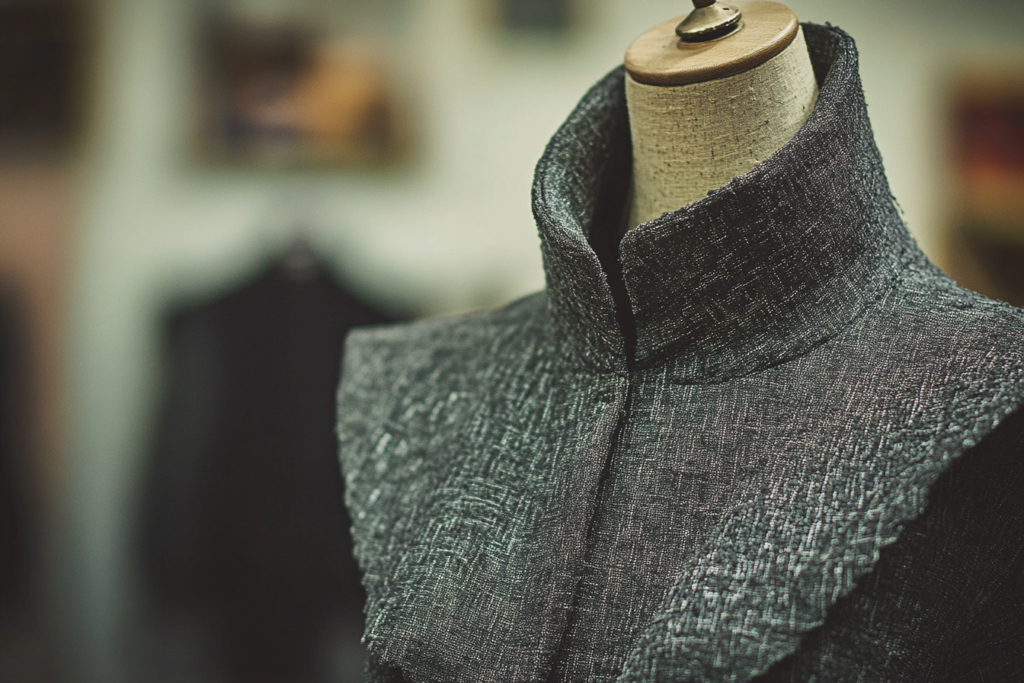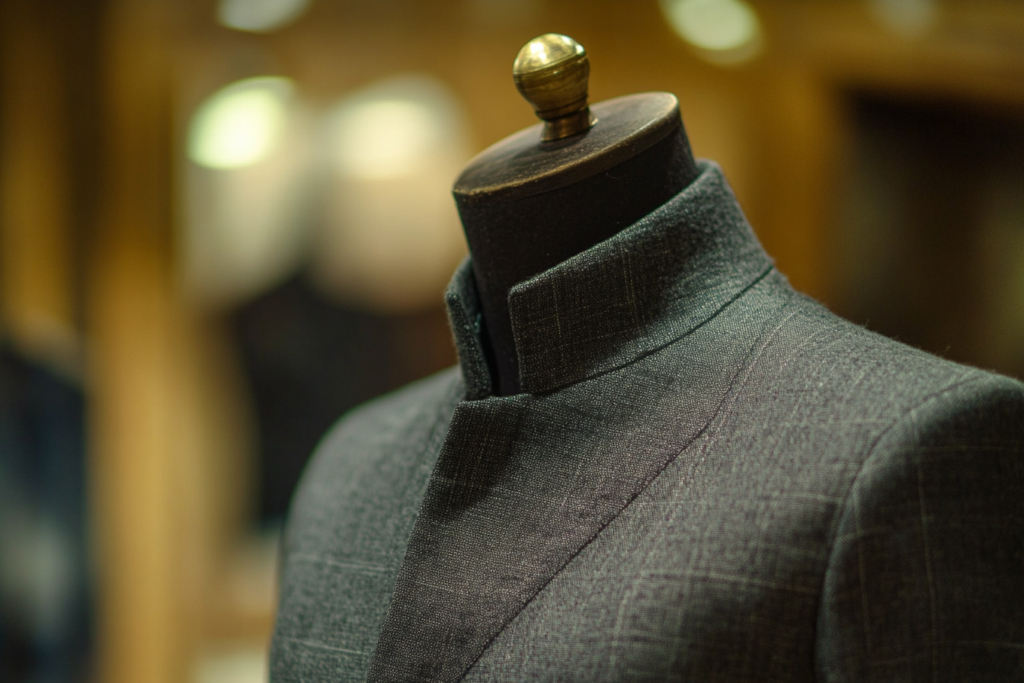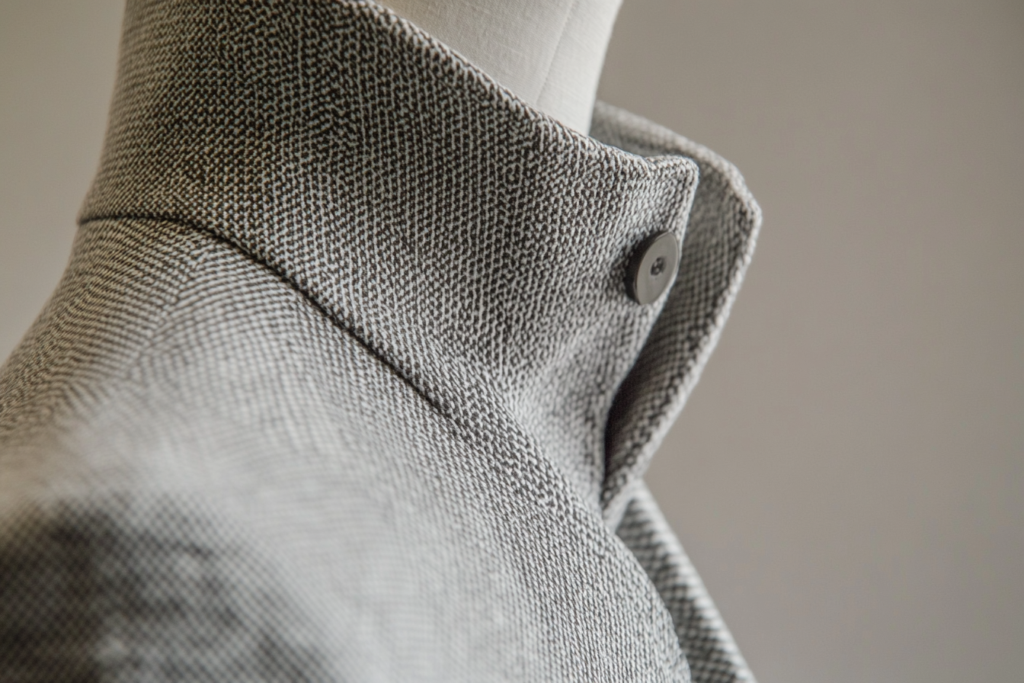Facings: A Method for Treating Raw Edges in Garment Construction
Meta Description: Facings are used in garment construction to finish raw edges, providing a clean, professional appearance. Learn about different types of facings and their applications.
Introduction: The Role of Facings in Garment Construction
In garment making, facings are an essential technique used to finish the raw edges of a garment, particularly around necklines, armholes, and other areas where a clean finish is required. They are typically made from the same fabric as the garment or a complementary fabric, and their primary purpose is to prevent raw edges from fraying, enhance the garment’s durability, and provide a neat, polished look.
Facings can be applied in a variety of ways depending on the design of the garment and the desired finish. The method of creating and applying facings can significantly influence the overall appearance and comfort of a garment.


What Are Facings?
Facings are typically a piece of fabric used to finish the edges of the garment where the raw fabric would otherwise be exposed. They are often used around areas like the neckline, armholes, or the front opening of a garment. The facing is sewn to the garment’s raw edge, turned inside, and then either hand-stitched or machine-stitched into place.
There are different methods of applying facings, depending on the design and finish required.
Types of Facings
- Simple Facing:
- This is the most basic form of facing, where a piece of fabric is cut to match the raw edge of the garment. It is then sewn to the garment, folded inside, and finished neatly with a topstitch or hand stitching.
- Simple facings are typically used for necklines and armholes on basic garments.
- Bias Facing:
- A bias facing is made from fabric cut on the bias (diagonal to the fabric’s grain). This type of facing allows for more flexibility and stretch, making it ideal for curves or rounded edges, such as armholes or necklines on garments made of stretch fabrics.
- Bias facings are often more durable and comfortable compared to regular facings, as they follow the natural stretch of the fabric.
- Shaped Facing:
- A shaped facing is a more intricate version of a simple facing, where the piece is cut to match the shape of the garment. Shaped facings are typically used on garments with more complex silhouettes, such as tailored jackets or dresses, where the facing helps the garment maintain its shape.
- These facings are usually interfaced to add structure and support.
- Hong Kong Facing:
- A Hong Kong facing is a method that involves wrapping the raw edge of the fabric with bias-cut strips of fabric. This technique is particularly useful for raw edges that need extra reinforcement, such as in couture garments or garments made from delicate fabrics.
- The finished facing is then sewn to the garment using hand stitches or a machine, providing a clean and professional finish.
The Importance of Facings in Garment Design
- Professional Finish:
- Facings provide a neat and polished finish to the garment. They prevent raw edges from fraying and ensure that the garment looks well-constructed. This is particularly important for high-quality garments or those made from delicate fabrics.
- Durability and Comfort:
- Facings can add durability to a garment, particularly in areas where the fabric experiences stress, such as armholes and necklines. Facings can also enhance the comfort of the garment by preventing irritation from raw fabric edges against the skin.
- Shape and Structure:
- In some designs, facings help to maintain the shape and structure of the garment. This is especially true for tailored garments like coats or blazers, where facings add structure to the edges.
- Fabric Conservation:
- By using facings, designers can save fabric, as the facing material is often a small piece of fabric, unlike a lining that may cover a larger area. This is especially important in garments that are cut from expensive fabrics or when fabric usage needs to be optimized.
How to Attach a Facing to a Garment
- Cut the Facing Piece:
- The facing piece is cut to match the edge of the garment. It should be cut slightly larger than the raw edge to allow for folding and hemming. In some cases, a facing may need to be interfaced to give it more structure.
- Sew the Facing to the Garment:
- The facing is sewn to the garment’s raw edge, typically right sides together. After sewing, the seam is pressed to ensure the facing lies flat against the garment.
- Trim and Clip the Seam:
- After attaching the facing, the seam may need to be trimmed to reduce bulk, and the raw edge of the facing is often clipped to allow for smoother folding.
- Turn the Facing Inside:
- The facing is then turned to the inside of the garment, covering the raw edge. This is the key step in creating a clean, finished look. The facing is stitched or hand-stitched to the inside of the garment.
- Finish the Facing:
- Finally, the facing is either topstitched, hand-stitched, or finished with a machine stitch to secure it in place.
Benefits of Using Facings in Garment Construction
- Enhanced Appearance: Facings ensure a clean, finished look for necklines, armholes, and other raw edges of the garment.
- Improved Durability: Facings help to prevent raw fabric from fraying and add extra durability to key areas of the garment.
- Fabric Conservation: Facings are often smaller than linings, making them a more cost-effective option for finishing edges.
- Comfort: By covering raw edges, facings contribute to the overall comfort of the garment, particularly in areas where the fabric may otherwise irritate the skin.
Conclusion: Why Facings Matter in Garment Design
Facings are a fundamental technique in garment construction that ensure a neat, professional finish while also contributing to the durability and comfort of the garment. Whether you are creating a basic T-shirt or a tailored coat, facings play an essential role in providing structure and eliminating raw edges. By using facings effectively, designers can enhance the overall quality of their garments, save on fabric costs, and improve production efficiency.



